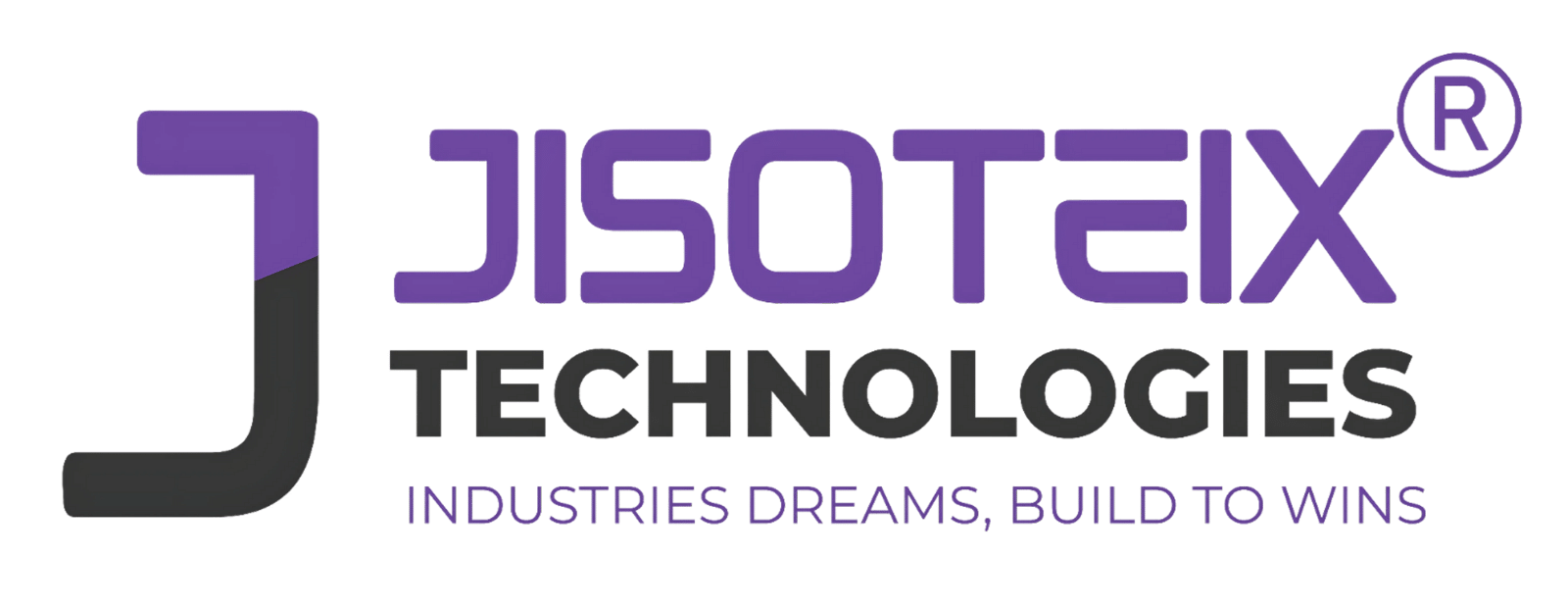How We Build High-Converting Shopify & WooCommerce Stores

How We Build High-Converting Shopify & WooCommerce Stores In today’s digital world, having an online store isn’t enough — your eCommerce website must convert visitors into buyers. At Jisoteix Technologies LLP, we specialize in building high-converting Shopify and WooCommerce stores that not only look great but also drive real business results. Whether you’re a startup, a growing D2C brand, or a B2B seller going digital, here’s how we help businesses succeed in eCommerce. ✅ 1. Strategic Planning & Market Research Before we write a single line of code, we understand: Your target audience Your competitors Your product types and categories User buying behavior in your industry We conduct a market audit and create a custom strategy tailored to your goals — because every brand is unique. 🎨 2. UI/UX Design That Converts Design is more than aesthetics. We focus on: Clean, mobile-first layouts User-centric navigation Conversion-focused product pages Visual hierarchy to guide user flow Every button, banner, and image is placed with purpose and intent — encouraging customers to click “Buy Now”. ⚙️ 3. Powerful Tech Stack & Custom Features We build fast, functional stores using: Shopify’s Liquid or WooCommerce’s PHP-based system Custom plugins, apps, and scripts Secure payment gateways and automation tools Need features like multi-language support, real-time inventory, or subscription models? We build it all — tailored to your needs. 🚀 4. SEO, Speed & Mobile Optimization Our stores are built to rank and perform: Optimized page speed (under 3 seconds) SEO-friendly URLs, meta tags, alt text Schema integration for product visibility Fully responsive design across all devices Result? More visibility on Google and better user engagement. 📦 5. Smart Product Pages That Sell We craft product pages with: High-quality images Clear CTAs (Add to Cart, Buy Now) Trust badges, reviews, and guarantees Urgency tools like stock counters or countdown timers Every page is built to convert traffic into customers. 🛠️ 6. Easy Backend for You Once we deliver your store, you’ll have: An easy-to-manage dashboard Training on how to update products & track orders Marketing automation integrations (email, SMS, WhatsApp) We build for your growth, not for complexity. 📈 7. Post-Launch Support & Marketing Boost After going live, we don’t vanish: Ongoing technical support Conversion Rate Optimization (CRO) audits SEO and performance monitoring Ad-ready landing pages and tracking pixels
How IT & Design Together Drive Digital Growth for Businesses in the Indian Market

How IT & Design Together Drive Digital Growth for Businesses in the Indian Market In today’s digital-first world, businesses in India are increasingly turning to innovative solutions to stay competitive. Among these, Information Technology (IT) and Design are two of the most critical pillars. But what truly drives digital growth is not just IT or design in isolation—it’s how they work together. Why IT and Design Integration Matters In the Indian market, where digital transformation is accelerating across industries, businesses need more than just good software or attractive visuals. The real value lies in a seamless user experience, powered by reliable technology and intuitive design. 1. First Impressions: UI/UX with Tech Backbone Indian consumers have become digitally savvy. They expect apps and websites to be fast, functional, and user-friendly. When a business integrates IT infrastructure with smart UI/UX design, it creates a powerful first impression. A responsive website built on solid IT architecture ensures zero downtime. Thoughtful UX design increases user engagement and reduces bounce rates. 2. Custom Solutions for Indian Business Needs IT enables custom-built platforms that match specific business models—whether it’s for retail, education, manufacturing, or healthcare. When design is incorporated from the ground up, these platforms are not just functional, but also brand-consistent and user-centric. For example: An Indian e-commerce startup can use IT to build secure payment gateways while using design to ensure easy navigation in multiple Indian languages. A healthcare provider can use IT for managing patient data and design for creating patient-friendly portals. 3. Boosting Digital Marketing ROI With India’s digital ad spend growing rapidly, businesses must ensure their campaigns perform well. Here’s where IT and design again go hand in hand: IT Tools like analytics, automation, and CRM systems provide actionable insights. Design assets like banners, videos, and landing pages grab attention and improve conversion rates. 4. Mobile-First India: Optimized Apps and Platforms India is a mobile-first market, with over 1 billion smartphone users. Businesses need mobile apps and mobile-responsive platforms that combine robust IT frameworks with intuitive design to provide smooth, fast, and reliable mobile experiences. 5. Data-Driven Design Enhancements With IT enabling the collection of user data, design decisions can be made based on real behavior patterns, not guesswork. This helps: Improve customer retention Reduce cart abandonment Personalize the user experience Real Impact in the Indian Business Landscape From Bangalore’s tech startups to Delhi’s digital marketing firms and Mumbai’s creative studios, the synergy between IT and design is clear: Startups use cloud tech and design sprints to launch fast. SMEs invest in ERP systems with simple dashboards. Corporates adopt AI-based platforms with sleek, branded interfaces. Conclusion: Digital Growth Demands Harmony In India’s rapidly evolving digital ecosystem, businesses that integrate IT and design effectively are the ones that scale faster, serve better, and stand out stronger. Whether you are a startup or an enterprise, aligning your tech stack with creative design thinking is not just an advantage—it’s a necessity.
Why 3D Modeling is Essential for Modern Product Visualization?

Why 3D Modeling is Essential for Modern Product Visualization ? In today’s fast-paced market, businesses need to showcase their products in the most engaging and realistic way possible. This is where 3D modeling has become a game-changer. By creating detailed, lifelike representations of products before they are physically manufactured, companies can communicate their vision more effectively and streamline their design and marketing processes. But why exactly is 3D modeling essential for modern product visualization? Let’s explore the key reasons. Realistic and Detailed Product Representation Unlike traditional 2D images or sketches, 3D models offer a highly realistic and detailed view of a product. This allows designers, marketers, and customers to see every angle, texture, and feature with exceptional clarity. The ability to rotate, zoom, and interact with the model helps users understand the product better and builds confidence even before a physical prototype is made. Faster and Cost-Effective Prototyping Creating physical prototypes can be expensive and time-consuming. With 3D modeling, businesses can develop virtual prototypes that can be easily modified without the need to manufacture multiple versions. This reduces costs and speeds up the product development cycle, allowing companies to bring their products to market faster. Enhanced Marketing and Sales 3D product visualization opens up innovative marketing opportunities. Interactive 3D models can be integrated into websites, online stores, and social media platforms, providing potential customers with an immersive experience. This interactive element increases engagement, reduces hesitation, and ultimately boosts sales conversion rates. Improved Communication Across Teams In product development, clear communication between designers, engineers, marketers, and clients is crucial. 3D models serve as a universal visual language that everyone can understand, reducing misunderstandings and ensuring that all stakeholders are aligned on the product’s look and functionality. Customization and Personalization 3D modeling enables customers to visualize custom options in real-time, such as changing colors, materials, or configurations. This level of personalization enhances the customer experience and helps businesses cater to individual preferences without the need for multiple physical samples. Better Presentation for Investors and Stakeholders For startups and companies seeking investment, showcasing a product through 3D models offers a polished, professional presentation. Investors can clearly see the potential and feasibility of the product, increasing the likelihood of securing funding. Conclusion As industries evolve, 3D modeling has become indispensable for modern product visualization. It not only improves design accuracy and communication but also empowers marketing teams with tools to create compelling, interactive presentations. Whether you’re developing a new gadget, fashion item, or industrial equipment, integrating 3D modeling into your workflow can provide a significant competitive edge.
